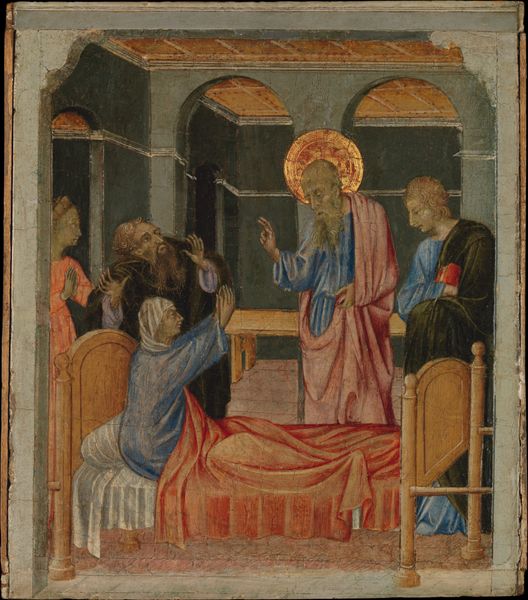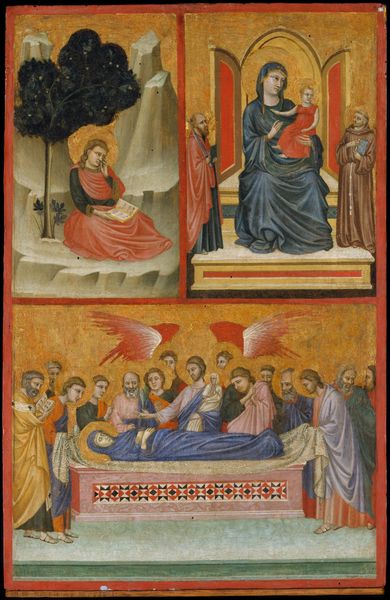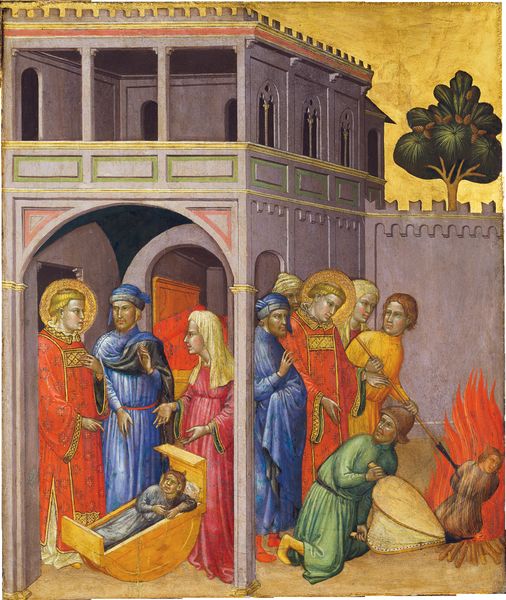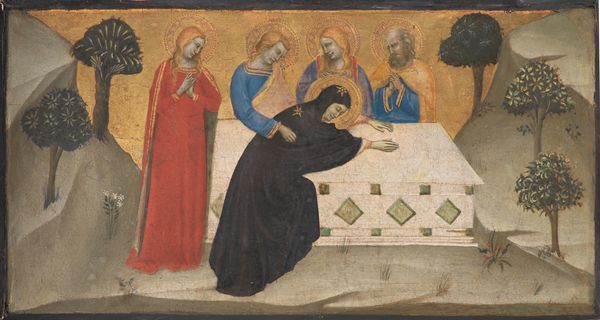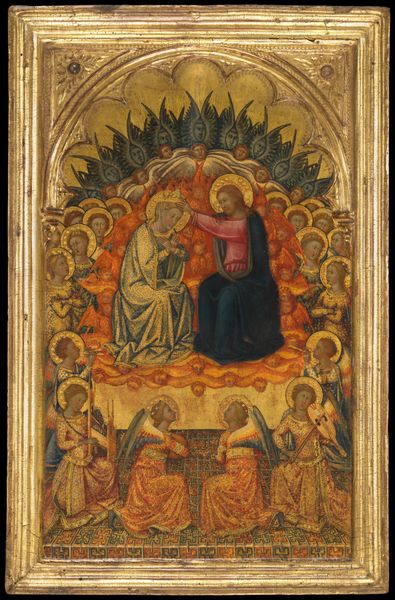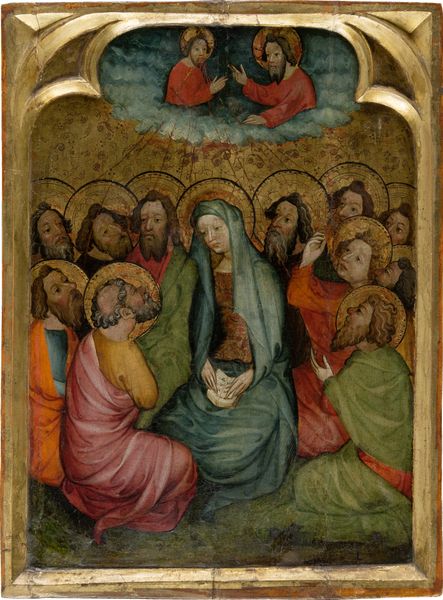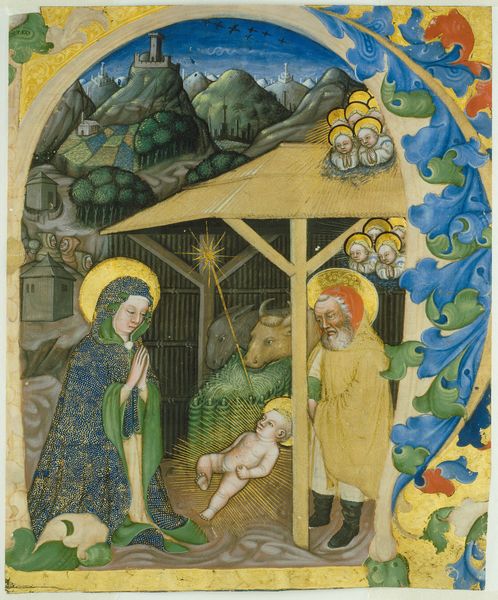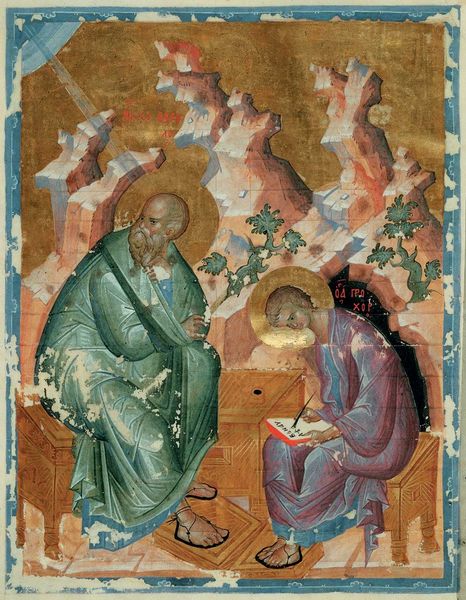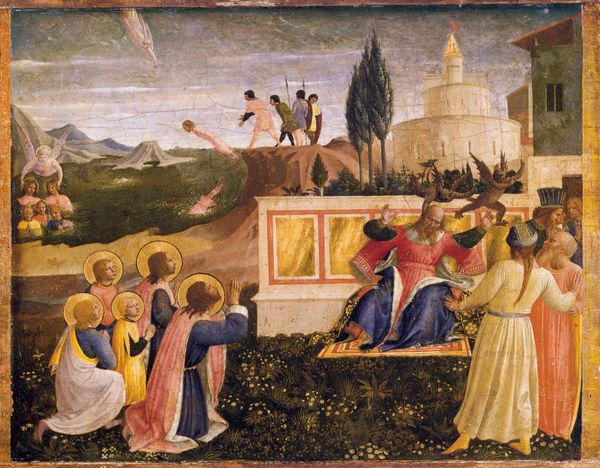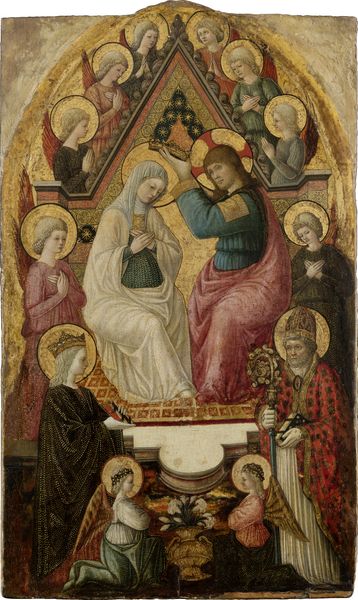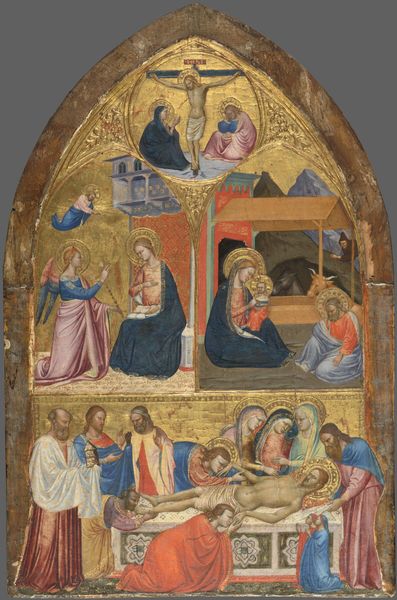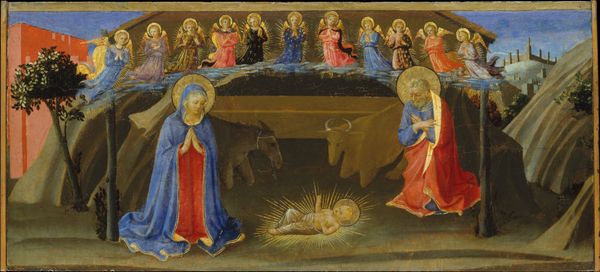![Scenes from the Passion of Christ: The Agony in the Garden [left panel] by Andrea di Vanni](/_next/image?url=https%3A%2F%2Fd2w8kbdekdi1gv.cloudfront.net%2FeyJidWNrZXQiOiAiYXJ0ZXJhLWltYWdlcy1idWNrZXQiLCAia2V5IjogImFydHdvcmtzLzQ3NmIzNTVkLWM2Y2EtNDBkOS1hZDg1LWI1ZGU2ZmI0ZmMxNC80NzZiMzU1ZC1jNmNhLTQwZDktYWQ4NS1iNWRlNmZiNGZjMTRfZnVsbC5qcGciLCAiZWRpdHMiOiB7InJlc2l6ZSI6IHsid2lkdGgiOiAxOTIwLCAiaGVpZ2h0IjogMTkyMCwgImZpdCI6ICJpbnNpZGUifX19&w=3840&q=75)
Scenes from the Passion of Christ: The Agony in the Garden [left panel] c. 1380s
0:00
0:00
tempera, fresco
#
narrative-art
#
tempera
#
gothic
#
figuration
#
fresco
#
history-painting
#
italian-renaissance
Dimensions: painted surface: 47 × 23.8 cm (18 1/2 × 9 3/8 in.) overall: 56.7 × 29.3 × 3.3 cm (22 5/16 × 11 9/16 × 1 5/16 in.)
Copyright: National Gallery of Art: CC0 1.0
Curator: Oh, this is "Scenes from the Passion of Christ: The Agony in the Garden," the left panel painted by Andrea di Vanni in the 1380s. Editor: It's captivating, really. The muted palette, those almost cartoonish figures in the background... I’m immediately drawn to the tension between the detailed foreground and that strangely flat backdrop. Curator: Absolutely. Di Vanni, part of the Sienese School, employed tempera in this piece, most likely with a fresco base, creating that unique texture and the ability to render incredible detail in the figures clothing. This medium choice situates it firmly within the late medieval and early Italian Renaissance practices where tempera was preferred. Editor: I'm also struck by how the social hierarchy is presented, Christ’s isolated communion juxtaposed against the chaotic city on the hill – and, even further below, the sleeping disciples. It all reads as a carefully staged power dynamic. How would this have been received at the time? Curator: Given its biblical subject matter, it likely served didactic purposes within a religious institution. Think of the politics of imagery here: scenes meant to instruct, to instill specific values and understanding of faith within the viewer. And consider the craft involved in applying gold leaf; labor intended to showcase spiritual power. Editor: You make me think of how this very panel would be received within a church setting, especially when placed next to its counterpart of similar artwork and aesthetic value. That's an angle to be examined to showcase that relationship. Curator: I appreciate how your view also highlights the devotional aspect and institutional placement within its own social narrative. Examining those values embedded within, we reveal this panel as not merely a painting, but as a statement of belief. Editor: It offers such an interesting perspective. This deep dive makes you reconsider this kind of art as more than mere visual representation; it's evidence of the social and economic conditions.
Comments
No comments
Be the first to comment and join the conversation on the ultimate creative platform.

